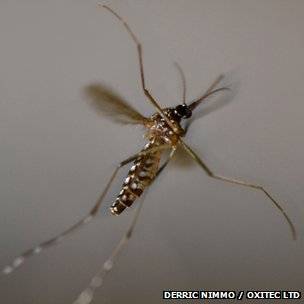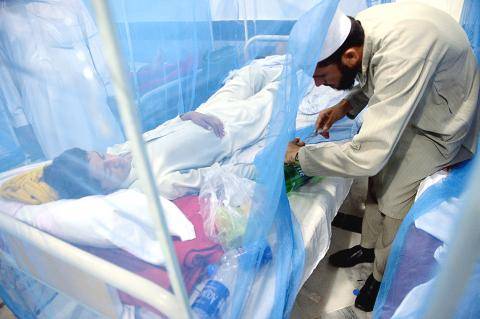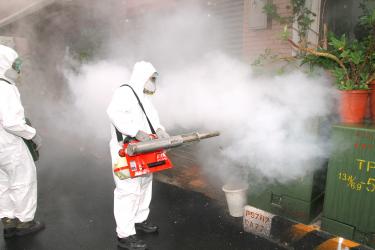hvactec
VIP Member
Genetically modified mosquitoes could prove effective in tackling dengue fever and other insect-borne diseases, a UK-based scientific team has shown.
The male mosquitoes are modified so their offspring die before reproducing.
In a dengue-affected part of the Cayman Islands, researchers found the GM males mated successfully with wild females.
In Nature Biotechnology journal, they say such mating has not before been proven in the wild, and could cut the number of disease-carrying mosquitoes.
Dengue is caused by a virus transmitted by the Aedes aegypti mosquito as it bites.
The World Health Organisation (WHO) estimates that there may be 50 million cases each year, and the incidence is rising, with some countries reporting what the WHO terms "explosive" outbreaks.
As yet, there is no vaccine.
Radiation damage
As far back as the 1940s, it was realised that releasing sterile males into the wild could control insects that carried disease or were agricultural pests.
When females breed with the sterile males rather than wild fertile ones, there will be no viable offspring, meaning there are fewer mosquitoes around to transmit the disease.
In the 1950s, the screwworm fly was eradicated from the Caribbean island of Curacao using males sterilised by radiation.
But the technology has not worked so well with disease-carrying insects.
Generally, the sterilising process weakens the males so much that they struggle to mate; the wild males are dominant.
Oxitec, a company spun off from Oxford University, uses a genetic engineering approach.
Offspring of their GM males live through the larval stage but die as pupae, before reaching adulthood.
In the latest study, the research group - which includes scientists from Imperial College London and the Liverpool School of Tropical Medicine - released batches of GM mosquitoes in 2009 in an area of the Cayman Islands where Aedes aegypti are common, and dengue sometimes present.

read more BBC News - GM mosquitoes show fever promise
The male mosquitoes are modified so their offspring die before reproducing.
In a dengue-affected part of the Cayman Islands, researchers found the GM males mated successfully with wild females.
In Nature Biotechnology journal, they say such mating has not before been proven in the wild, and could cut the number of disease-carrying mosquitoes.
Dengue is caused by a virus transmitted by the Aedes aegypti mosquito as it bites.
The World Health Organisation (WHO) estimates that there may be 50 million cases each year, and the incidence is rising, with some countries reporting what the WHO terms "explosive" outbreaks.
As yet, there is no vaccine.
Radiation damage
As far back as the 1940s, it was realised that releasing sterile males into the wild could control insects that carried disease or were agricultural pests.
When females breed with the sterile males rather than wild fertile ones, there will be no viable offspring, meaning there are fewer mosquitoes around to transmit the disease.
In the 1950s, the screwworm fly was eradicated from the Caribbean island of Curacao using males sterilised by radiation.
But the technology has not worked so well with disease-carrying insects.
Generally, the sterilising process weakens the males so much that they struggle to mate; the wild males are dominant.
Oxitec, a company spun off from Oxford University, uses a genetic engineering approach.
Offspring of their GM males live through the larval stage but die as pupae, before reaching adulthood.
In the latest study, the research group - which includes scientists from Imperial College London and the Liverpool School of Tropical Medicine - released batches of GM mosquitoes in 2009 in an area of the Cayman Islands where Aedes aegypti are common, and dengue sometimes present.

read more BBC News - GM mosquitoes show fever promise








